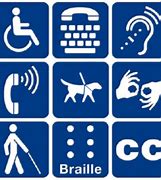Below is a review of the posts (on Facebook, LinkedIn, and Twitter) from the past week. You can check out the full posts by clicking on the links.

In the post on Sunday 4/17/2022 we saw that a law firm’s two offices may bring it under ADA in job bias suit. Amy asked the law firm for a reduced work schedule for health reasons. The request was denied. Amy filed suit in 2019. The trial court dismissed the suit – the basis is in the post. Amy then appealed. The appeals court has remanded for additional fact-finding in/by the trial court under the “integrated enterprise” test. What does that mean? Here, if the law firm had 15 employees between both of its offices (even though they were in different states). The integrated enterprise test had not been extended to the ADA until now, but it had been applied in the Title VII and ADEA context in the Ninth Circuit. How and why that played into the court’s decision are in the post. So what factors might a jury find satisfy the four factors of the integrated enterprise test? That the offices share a toll-free number and website and the other things noted in the post.
TAKEAWAY: Be careful as the ADA applies to ALL employers with at least 15 employees and this rationale may be imported to PA – know the law and your rights and obligations.

The post on Monday 4/18/2022 told us that DOJ (finally) releases website ADA accessibility Guidance. [Once again the link may have gotten cut off: it is http://ow.ly/MRxS50IQyat]. It’s only taken 5+ years, but the day is here, sort of. There is still no enforceable regulation with standards for website accessibility, but this is a step in the right direction. To start, the Guidance says that the ADA applies to all online business (including state and local government) services, programs and activities open to the public. According to the Guidance, website accessibility is achievability by compliance with WCAG. What that is and what is means is in the post. Some of the barriers WCAG seeks to break down are when websites sort information by color cues alone (thus hindering those who are colorblind or use screen readers), have images without text alternatives (hindering those who are visually impaired or cannot understand the image content/purpose) and more as noted in the post. Just a few of the things recommended by the Guidance per WCAG are color contrast, text cues, and 4 others listed in the post.
TAKEAWAY: If you weren’t ensuring website accessibility per WCAG standards before, you should now. Just do it.

The post on Tuesday 4/19/2022 showed that an HOA and veteran-led group dispute neighborhood memorial improvements. This happened in TN but could happen anywhere, even in your condo/HOA, so pay attention. In this HOA there was a memorial called the Veteran’s Walk at the neighborhood entrance. This past June a veteran’s group decided to raise money to improve the memorial walk’s lighting. How much did they raise? See the post (and smile). They turned over the money to the Association. And then … the trouble began. What the association said and did is in the post. Sadly, the lighting did not happen and the dispute is still ongoing.
TAKEAWAY: Association leadership (the Board) can accept assistance form owners and others as long as there are no legal ramifications – but get that all worked out ahead of time in your condo/homeowners’ association. Consult a community association lawyer if necessary.

The post on Wednesday 4/20/2022 taught us how to evaluate COVID-19 as a disability under the ADA. By now you (should) know that in December 2021 the EEOC issued updated Guidance clarifying that COVID-19 may qualify as a disability under the ADA. To whom the ADA applies is mentioned in the post. The EEOC now says that someone with COVID-19 or long-COVID symptoms (which is defined as noted in the post) has a disability under the ADA such that the interactive process for reasonable accommo-dation applies. Remember that the ADA has three categories to which it applies: actual disability, record of a disability, or being regarded as having a disability. The definition for each of those is also in the post. COVID-19 is a physiological condition that affects one or more body systems and major bodily functions (including those listed in the post), so it may be an actual disability under the ADA even if the symptoms are episodic. The EEOC’s Guidance also talks about ‘substantially limiting”, including what that means in this context and some examples. That is all in the post. COVID-19 itself may not be a disability, but if it exacerbates a pre-existing condition, then there might now be a qualifying disability under the ADA. On the other hand, examples of what would not qualify as “substantially limiting” are in the post too. Finally, keep an eye out as the Guidance continues to evolve.
TAKEAWAY: Employers should request medical documentation as to the employee’s diagnosis and restrictions at the start of the accommodation process – and bring in a knowledgeable employment lawyer to make sure the law is followed to a T by both employee and employer.

The post on Thursday 4/21/2022 told us a federal court dismisses disability discrimination suit based on employee’s CBD use. Let’s look at the facts. Rocchio was an engineer who was subject to random drug testing per the employer’s policy. The policy required testing for marijuana and provided for termination if there was a positive test result. In July 2019 Rocchio had to take a random drug test; the result was positive for marijuana. He said the result was due to use of CBD oil. The employer terminated his employment under its policy. He sued, claiming violation of the ADA. He had a unique argument that is noted in the post. How the court dealt with the argument – despite Rocchio’s claim of notice to the third-party administrator – and its analysis of the protected categories under the ADA (as noted in our post from 4/20/2022) and ruling are all in the post.
TAKEAWAY: Make sure any policies that can lead to adverse action pass legal muster – have them reviewed by an employment lawyer. And apply them uniformly.

The post on Friday 4/22/2022 was about condo/HOA questions: things to consider when making unexpected repair. You know, those things that are not in the budget for the year, but life happens. So questions arise as to the source of funds for the repair and who needs to approve the repair, i.e., the Board or owners. The answers depend on whether there is a law that governs the situation and, if not, what the association’s Governing Documents provide. An example of how this might play out is in the post.
TAKEAWAY: Budget for repairs, but also ensure provisions are in place for unbudgeted emergencies or other things that arise; get assistance from a community association lawyer.

Finally, in the post yesterday 4/23/2022 we learned the EEOC just made a small but significant step toward greater inclusion for nonbinary people. Employers must pay attention! This change affects EEOC voluntary intake documents and discrimi-nation charges. So what is the change? People can self-identify with an “X” gender marker and a new “Mx” prefix. What the “X” and “Mx” indicate is discussed in the post. This change also coincides with the Department of State and what many other states have done (see the post).
TAKEAWAY: Employers should consider ways to keep employees happy – and accepting their sexual orientation and gender identification choices is but one.

 York, Pennsylvania 17403
York, Pennsylvania 17403